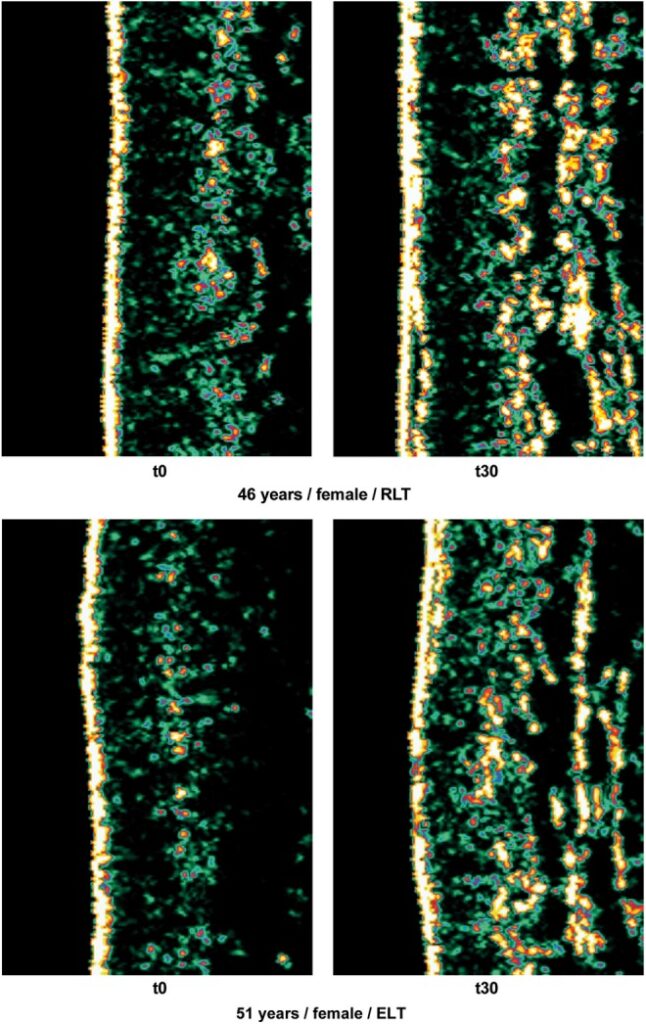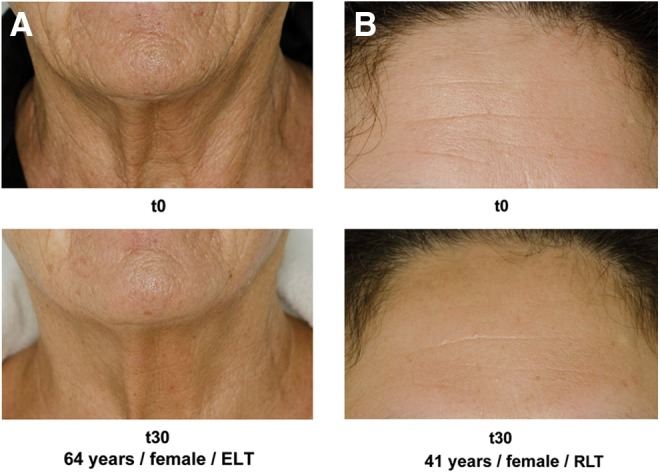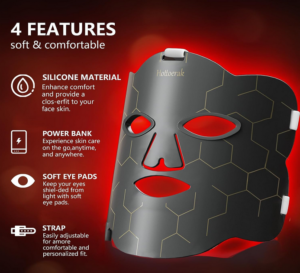Shedding Light on the Best Brands for Red Light Therapy

Benefits of Using Red Light Therapy?
Popularly known as low-level laser therapy or photobiomodulation, red light therapy has garnered attention for its potential skin-rejuvenating advantages. This non-invasive procedure exposes the facial skin to low-level red light wavelengths, penetrating the dermis and triggering cellular repair and regeneration. Scientifically proven, red light therapy promotes collagen production, diminishes fine lines and wrinkles, and enhances overall skin tone.
The roots of this discovery can be traced back to NASA’s research in the 1990s. Initially designed for plant growth experiments in space, red light-emitting diodes (LEDs) were observed to positively impact the skin cells of astronauts. This fortuitous observation spurred further exploration into the therapeutic applications of red light, revealing its remarkable effects on human skin.
Researchers, delving into molecular and cellular mechanisms, unveiled that exposure to low-level red light stimulates adenosine triphosphate (ATP) production – the cellular energy currency. This energy boost enhances various cellular processes, including collagen synthesis and increased blood circulation, laying the foundation for red light therapy’s adoption in dermatology and skincare.
Numerous clinical studies over the years have affirmed the efficacy of red light therapy in promoting collagen production, reducing wrinkles, and refining skin texture. Today, red light therapy stands as a popular and safe non-invasive option for facial rejuvenation, endorsed by dermatologists, skincare professionals, and individuals seeking natural and effective solutions for healthier and more youthful-looking skin. Some of these benefits include
Skin Health:
-
-
Collagen Production: Red light therapy is known to stimulate collagen production, promoting skin elasticity and reducing the appearance of wrinkles and fine lines.
-
Wound Healing: The therapy may enhance wound healing by promoting cell regeneration and tissue repair.
-
Pain Relief:
-
-
Reduced Inflammation: Reducing inflammation is one of the primary mechanisms behind red light therapy’s potential pain-relieving effects. It may be beneficial for conditions like arthritis and muscle soreness.
-
Pain Management: Users have reported alleviation of various types of pain, including joint pain, back pain, and headaches.
-
Muscle Recovery and Performance:
-
-
Improved Muscle Recovery: Red light therapy may help reduce muscle fatigue and accelerate recovery after intense physical activity.
-
Enhanced Athletic Performance: Some studies suggest that red light therapy may contribute to improved athletic performance by enhancing mitochondrial function.
-
Joint Health:
-
-
Arthritis Relief: Red light therapy has shown promise in providing relief for arthritis symptoms, including pain and stiffness.
-
Joint Disorders: It may be beneficial for individuals with various joint disorders by reducing inflammation and promoting better joint function.
-
Hair Growth:
-
-
Stimulated Hair Follicles: Red light therapy has been investigated for its potential to stimulate hair growth by promoting blood flow to the scalp and encouraging hair follicle activity.
-
Circulation and Cardiovascular Health:
-
-
Improved Blood Circulation: Red light therapy may enhance blood flow, contributing to better cardiovascular health.
-
Lowering Blood Pressure: Some studies suggest that red light therapy could have a positive impact on blood pressure levels.
-
Mood and Sleep:
-
-
Increased Serotonin Production: Exposure to red light may trigger the release of serotonin, contributing to an improved mood.
-
Regulated Circadian Rhythms: Red light therapy may help regulate circadian rhythms, potentially improving sleep quality.
-
Reduced Inflammation:
-
-
Anti-Inflammatory Effects: Red light therapy has demonstrated anti-inflammatory effects, making it a potential adjunctive therapy for inflammatory conditions.
-
Cognitive Function:
-
-
Enhanced Cognitive Function: Some studies suggest that red light therapy may have neuroprotective effects, potentially contributing to improved cognitive function.
-
In a groundbreaking study conducted in January 2012, researchers explored the potential of red light therapy (RLT) and energizing light technology (ELT) for skin rejuvenation and repair. The study, consisting of 136 participants, aimed to evaluate the safety and efficacy of these novel light sources, considering factors like age, fainting tendencies, and other health parameters.
Study Design: Participants were divided into groups and underwent treatments twice a week for 30 sessions, with a control group from JK company for comparison. The study strictly adhered to ethical guidelines, ensuring the well-being of participants. Random assignment to treatment groups was implemented, and the control group did not receive any treatment.
Treatment Units and Light Sources: The study utilized four treatment units equipped with different light sources. Two units employed medium-pressure lamps (ELT), while the other two used low-pressure lamps (RLT). These lamps emitted specific wavelengths within the range of 611 to 650 nm, focusing on the treatment fluences. UV radiation was kept to a minimum across all units.
Measurements and Assessments: Various measurements, including questionnaires, ultrasound scans, and clinical photography, were employed to assess improvements in skin texture and appearance. Participants were evaluated at baseline, after 15 and 30 sessions, and a follow-up examination at 6 months.
Key Findings: The results demonstrated significant improvements in collagen density, skin feeling, and complexion among participants in both RLT and ELT groups. Conversely, the control group exhibited no significant enhancements in collagen density and even experienced worsened skin roughness and wrinkles. Importantly, there were no significant differences in skin complexion and feeling between the RLT and ELT groups.
Long-Term Follow-Up: The study included a long-term follow-up, indicating sustained improvements in skin parameters for participants who continued the therapy. While the study reported no severe adverse events, participants experienced increased collagen density and subjective improvements in skin feeling and complexion.
The following image illustrates two sets of collagen ultrasonography scans, showcasing the augmentation in collagen density from the initial time point (t0) to the conclusion of the study (t30) for an individual from both the RLT and ELT groups.

Clinical photography captured noticeable alterations in wrinkles and skin roughness. Figure 3 provides an illustration featuring a subject from each treatment group, comparing their initial condition (t0) with the status at the conclusion of the study (t30).
Illustrative patient photos: (A) A 64-year-old woman undergoing energizing light technology (ELT). (B) A 41-year-old woman experiencing red light technology (RLT).

How to Choose the Perfect Red Light Therapy Device for You?
Red light therapy for the face, also known as low-level laser therapy (LLLT) or photobiomodulation, has gained significant attention for its potential skin-rejuvenating benefits. This non-invasive treatment involves exposing the skin to low-level wavelengths of red light, which penetrates the dermis, stimulating cellular repair and regeneration. Red light therapy has been shown to promote collagen production, reduce fine lines and wrinkles, and improve overall skin tone.
As the popularity of red light therapy continues to soar, selecting the right device becomes a crucial step in unlocking its potential benefits. With a multitude of options available, navigating the market may seem overwhelming. Fear not! In this blog post, we’ll guide you through the essential considerations to help you choose the perfect red light therapy device tailored to your specific needs.
Understand Your Goals:
Skin Rejuvenation, Pain Relief, or Both? Define your primary goals for using red light therapy. Whether it’s enhancing skin health, relieving pain, or a combination of benefits, understanding your objectives will guide your device selection.
Wavelengths and Power:
Red and Near-Infrared Wavelengths: Opt for a device that offers both red (630-660nm) and near-infrared (810-850nm) wavelengths. These specific ranges have shown optimal effectiveness in various therapeutic applications.
Power Output (mW/cm²): Consider the power output or irradiance of the device. A higher power output can contribute to more effective light therapy.
Device Size and Design:
Treatment Area: Determine the size of the area you intend to treat. Smaller, targeted devices may be suitable for facial treatments, while larger panels are ideal for full-body coverage.
Portability: If you plan to use the device on the go or in different areas of your home, consider the device’s portability and ease of use.
Ease of Use and Controls:
User-Friendly Controls: Look for a device with intuitive controls. Some devices offer pre-programmed settings for convenience, while others allow customization based on your preferences.
Timer and Session Length: Consider devices with built-in timers to ensure consistent and controlled treatment durations.
Brand Reputation:
Research Brands: Investigate the reputation of different brands. Brands with a history of producing high-quality devices, backed by positive customer reviews, are likely to offer reliable options.
Clinical Support and Research:
Scientific Backing: Opt for devices that are supported by scientific research or clinical studies. This indicates a commitment to efficacy and transparency by the manufacturer.
Budget Considerations:
Balancing Features and Cost: Set a budget and find a device that strikes a balance between the features you need and the cost. There are effective devices available at various price points.
Warranty and Customer Support:
Check Warranty Terms: Ensure the device comes with a warranty, demonstrating the manufacturer’s confidence in their product. Additionally, consider the availability and responsiveness of customer support.
Choosing the right red light therapy device involves a thoughtful consideration of your goals, technical specifications, and brand reputation. By understanding your needs and navigating the market armed with this knowledge, you can confidently select a device that illuminates your path to enhanced well-being. Illuminate your life with the perfect red light therapy device designed just for you.
What Is The Best Range For Red Light Therapy?
Red light therapy, also known as photobiomodulation, has gained acclaim for its potential health benefits, ranging from skin rejuvenation to pain relief. One critical factor that determines the effectiveness of this therapy is the range of wavelengths used. In this SEO blog post, we’ll delve into the science behind red light therapy and explore the optimal range for harnessing its illuminating benefits.
Understanding the Wavelengths:
Red light therapy primarily utilizes two specific ranges of wavelengths:
Red Light (630-660nm):
The red light spectrum is associated with skin health and rejuvenation. This range has demonstrated positive effects on collagen production, reducing wrinkles and fine lines, and promoting overall skin vitality.
Near-Infrared Light (810-850nm):
Near-infrared light penetrates deeper into tissues and is associated with benefits such as enhanced muscle recovery, reduced inflammation, and support for joint health. It is particularly effective in reaching areas beneath the skin’s surface.
Optimal Range for Red Light Therapy:
The optimal range for red light therapy typically includes both red and near-infrared wavelengths. Here’s why:
Comprehensive Cellular Activation:
The combination of red and near-infrared wavelengths ensures a more comprehensive activation of cellular processes. Red light affects surface-level skin cells, while near-infrared light penetrates deeper to reach muscles, joints, and other tissues.
Collagen Stimulation and Skin Health:
The red light range (630-660nm) is specifically beneficial for stimulating collagen production in the skin. This not only promotes anti-aging effects but also supports wound healing and overall skin health.
Mitochondrial Function and Energy Production:
Near-infrared light (810-850nm) targets the mitochondria within cells, enhancing their function and promoting energy production. This is crucial for cellular repair and regeneration.
Pain Relief and Anti-Inflammatory Effects:
Both red and near-infrared wavelengths have demonstrated anti-inflammatory effects, making red light therapy effective for pain relief, reducing inflammation in joints and muscles.
Flexibility for Various Applications:
The combination of red and near-infrared wavelengths provides flexibility for addressing a wide range of health concerns, making red light therapy versatile for applications such as skin care, muscle recovery, and joint health.
When considering red light therapy, it’s crucial to choose a device that offers a balanced combination of red (630-660nm) and near-infrared (810-850nm) wavelengths. This ensures a holistic approach to cellular activation, addressing both surface-level and deeper tissue concerns. As you embark on your red light therapy journey, remember that the best results often come from a well-rounded and scientifically supported approach. Illuminate your well-being with the optimal range for red light therapy – a spectrum designed to enhance your skin, promote recovery, and support overall health.
What is The Best Brand For Red Light Therapy?
Understanding the Landscape:
The red light therapy market is teeming with options, each claiming to be the best. However, discerning consumers consider factors beyond mere marketing claims. To identify the best brand, let’s explore some key elements:
Product Quality and Innovation:
Look for brands known for their commitment to quality and innovation. Top-tier brands invest in research and development to bring cutting-edge technology to their devices.
Customer Reviews and Testimonials:
Real-world experiences speak volumes. Explore customer reviews and testimonials to gauge user satisfaction. Positive feedback regarding results and customer service can be indicative of a brand’s reliability.
Clinical Support and Research:
Reputable brands often support their products with scientific research and clinical studies. A brand that prioritizes the validation of its devices through research demonstrates a commitment to transparency and efficacy.
Warranty and Customer Support:
A reliable warranty and responsive customer support are crucial aspects of a trustworthy brand. Ensure that the brand stands behind its products with a solid warranty and provides helpful customer assistance.
Leading Brands in Red Light Therapy:
Several brands have established themselves as frontrunners in the red light therapy market. Here are three noteworthy contenders:
NewKey: The NEWKEY Red Light Therapy Mask offers a comprehensive at-home photon skin care solution, utilizing 150 LED chips with 7 precise wavelengths to address wrinkles, acne, and skin concerns, promising visible results over 8 weeks, improved skincare absorption, and enhanced natural beauty.
Mito Red Light: Mito Red Light has made a mark with products like the MitoMIN, focusing on user-friendly designs and efficient light therapy. Their devices cater to both beginners and seasoned users.
Hottoerak: Hottoerak is a prominent company in the field of red light therapy, providing innovative and portable solutions like their red light therapy device, designed to enhance skin health with a focus on portability and user-friendly features.

GYH: GYH is a leading company specializing in skincare technology, offering the GYH LED face mask equipped with precise wavelengths, patented eye protection, and high-energy lamp beads for efficient and convenient at-home skin rejuvenation.

ZOVIE: ZOVIE is a reputable red light therapy company committed to delivering innovative and effective skincare solutions, exemplified by their F1 Flexible 7 in 1 Colors LED Face Mask designed for at-home rejuvenation.
This post contains affiliated links.
- Categories
- Blog




